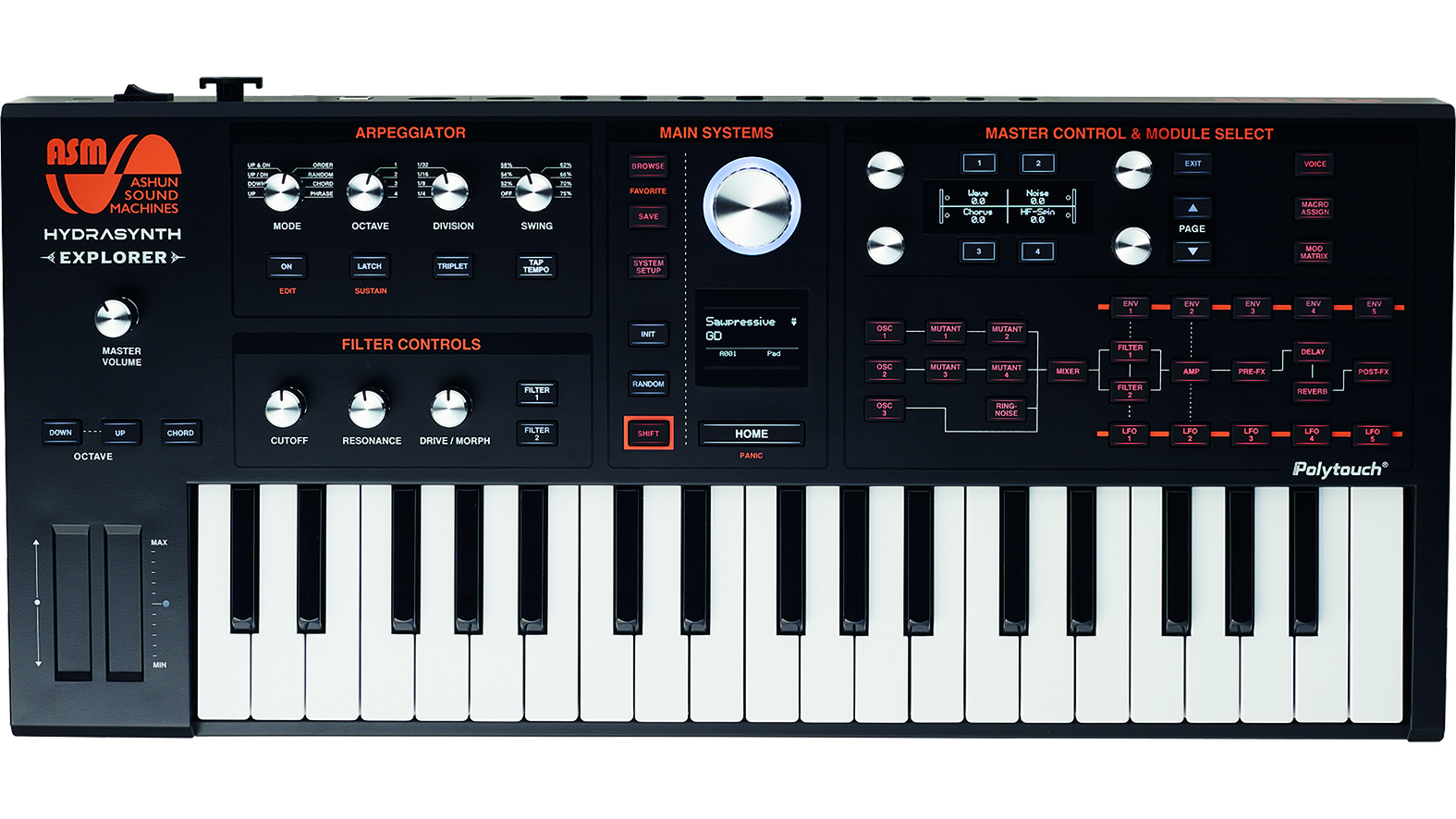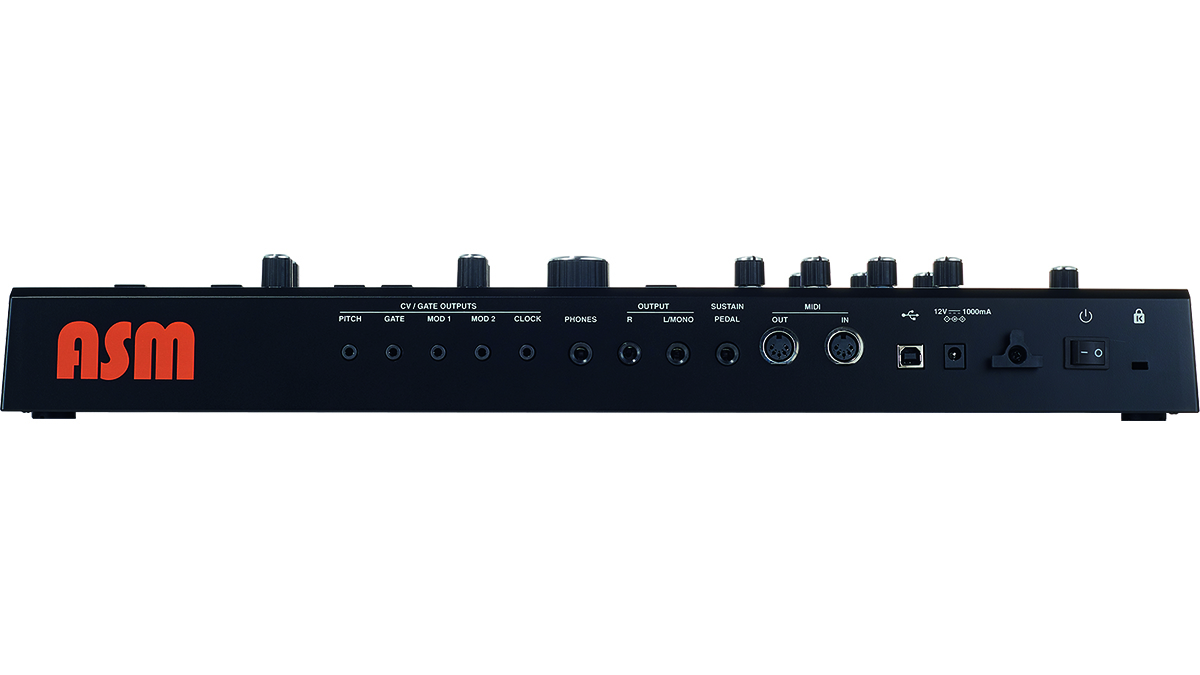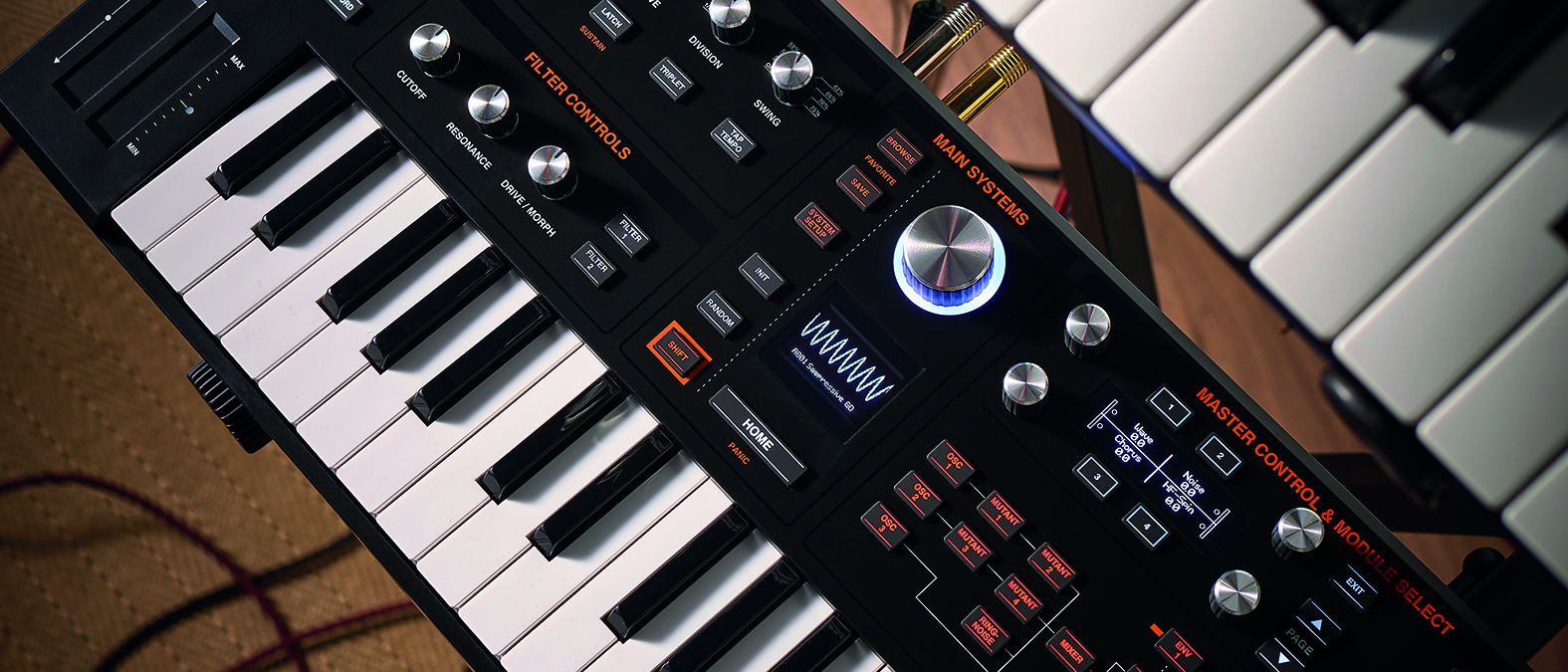MusicRadar Verdict
A compact, portable synth which retains the allure of the polyphonic aftertouch selling point of the original, albeit with tinier keys.
Pros
- +
The same great Hydrasynth sound engine and effects.
- +
Even this smaller version has polyphonic aftertouch.
- +
It’s portable and can be run on batteries.
Cons
- -
The small keys make subtle playing and polyphonic modulation harder.
- -
The reduced interface is not quite as clear or easy to use as on the original full-size synth.
MusicRadar's got your back
ASM Hydrasynth Explorer: What is it?
A few years back, a synth arrived from a new brand that garnered significant interest: the Hydrasynth, from Ashun Sound Machines, a Chinese company with a multinational team involved in the design and creation of their instruments.
What really grabbed people when the original Hydrasynth was first announced was the surprisingly flexible sound generation system combined with the plentiful real-time control that included polyphonic aftertouch (a relative rarity amongst synths even today). When people started to use and hear the synth, this interest turned to genuine excitement.
This is sure to continue as ASM recently announced both portable (Explorer) and larger dual-engine (Deluxe) versions to go with the original four-octave and desktop versions of the original.

ASM Hydrasynth Explorer: Performance and verdict
A quick recap of the Hydrasynth sound engine’s offerings: each voice (of the eight available) gets three oscillators, all capable of selecting from over 200 different wave forms. However, the first two oscillators each have a couple of ‘Mutator’ modules which mangle the initial waveform in a range of ways. After mixing these together, alongside ring modulator and noise sources, two filters give further shaping.
Modulation and control is addressed with a multitude of envelopes and LFOs and the famed Hydra ‘Polytouch’ (polyphonic aftertouch) alongside pitch bend and modulation ribbons. Mention must be also made of the great effects – for once not just a functional add-on.
It’s good to see ASM making efforts to cater for a range of synth users
It’s good to see ASM making efforts to cater for a range of users. They obviously had to make some compromises in terms of direct control with this version, and while the larger screen and more hands-on approach of the original is missed, the sound engine and quality of the synth’s output remains.
The keyboard clearly has its limitations in terms of playability, but given the diminished size, it does the job adequately, and the polyphonic aftertouch features remain the same as the original – though a degree of tweaking might be required to get the best out of the smaller keys on this front.

We were less fond of the ribbon-based pitch and mod wheels, though the experience did improve with familiarity. CV/Gate, modulation and clock outputs are still available via the back panel, though the voltage-based modulation inputs have been dropped along with the large lateral ribbon of the original. This does mean that users who want to integrate their synth more fully with a modular rig should opt for a full-size version.
However, all these can perhaps be forgiven given the Explorer’s compact and portable remit – don’t forget that you can be truly mobile with this synth as it claims up to four hours’ battery life from decent AAs. Another winner for ASM.
MusicRadar verdict: A compact, portable synth which retains the allure of the polyphonic aftertouch selling point of the original, albeit with tinier keys.
ASM Hydrasynth Explorer: Hands-on demos
ASM Ashun Sound Machines
sonicstate
Red Means Recording
Andertons Synths, Keys and Tech
ASM Hydrasynth Explorer: Specifications
- KEY FEATURES 8-voice polyphonic digital wave morphing synthesiser. CV/Gate, USB and MIDI connectivity. 3-octave mini-keyboard with POLYTOUCH™ Polyphonic Aftertouch. External or battery power options.
- CONTACT: Ashun Sound Machines
“Excels at unique modulated timbres, atonal drones and microtonal sequences that reinvent themselves each time you dare to touch the synth”: Soma Laboratories Lyra-4 review
“I used everything I knew about music”: How Green Day exceeded expectations with their most ambitious song
YouTube just added AI tools that makes musicians, library music and video editors redundant










